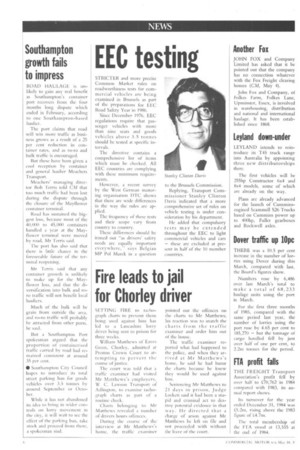EEC testing
Page 8

If you've noticed an error in this article please click here to report it so we can fix it.
STRICTER and more precise Common Market rules on roadworthiness tests for cornmercial vehicles are being examined in Brussels as part of the preparations for EEC Road Safety Year in 1986.
Since December 1976, EEC regulations require that passenger vehicles with more than nine seats and goods vehicles above 3.5 tonnes should be tested at specific intervals.
The directive contains a comprehensive list of items which must be checked. All EEC countries are complying with these minimum requirements.
However, a recent survey by the West German motoring organisation tYrc shows that there are wide differences in the way the rules are applied.
The frequency of these tests and their scope vary from country to country.
These differences should be ironed out "as drivers' safety needs are equally important everywhere," says Belgian MP Pol Marck in a question to the Brussels Commission, Replying, Transport Commissioner Stanley Clinton Davis indicated that a more comprehensive set of rules on vehicle testing is under consideration by his department.
He added that compulsory tests may be extended throughout the EEC to light commercial vehicles and cars — these are excluded at present in half of the 10 member countries.




















































































